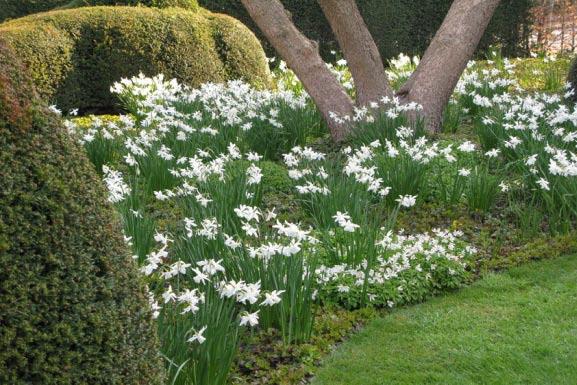KNOWitall
Ask the Expert By Debra Ricigliano
Flowering Plants for Summer into Fall
Q: Summer is winding down, but I know there is still plenty of time to enjoy flowers in my garden. Can you suggest some perennials and shrubs that bloom later in the season that I can enjoy into the fall? A: There is still plenty of time to enjoy your garden. For a longer season of interest, select plants that bloom later in the season when creating a landscape plan. Not only do flowers provide beauty for you, but also nectar for pollinators. Some native perennial examples (not all of these are MD, DC, or VA natives) are the many species of asters, including New England aster, (Symphyotrichum novae-angliae) and white wood asters (Aster divaricatus). Turtlehead (Chelone glabra), goldenrod (Solidago odora and S. rugosa), sneezeweed (Helenium), anise hyssop (Agastache foeniculum), and bugbane (Actaea americana) are pretty and can be planted with native grasses that produce ornamental seedheads. Big bluestem (Andropogon gerardii), switchgrass (Panicum virgatum), little bluestem (Schizachyrium scoparium), and purple love grass (Eragrostis spectabilis) are ornamental grasses to add. Sedums, Japanese anemones, dahlias, and Russian sage are just a few of the many other non-native perennials that bloom from summer into fall. Oakleaf and other species of hydrangeas have been blooming for a while, but their flowers still provide ornamental interest. The leaves of oakleaf hydrangea also provide fall color and the bark has winter interest. Non-native shrubs like abelia and caryopteris are late bloomers, and many butterflies and other pollinators will sip nectar from the flowers.
Odd Growths on Witch Hazel Foliage
Q: What are these odd, cone-shaped growths I found on the leaves of my witch hazel? Should I be concerned, and is there something I need to do to treat the tree? A: Your witch hazel (Hamamelis virgin22
WASHINGTON GARDENER
AUGUST 2021
Spiny witch hazel gall aphids on the back of a birch leaf. Photo courtesy of UMD HGIC.
iana) has spiny witch-hazel leaf gall (Hormaphis hamamelidis). These aphids have a complicated life cycle, alternating between two hosts: birch and witch hazel. In late spring or early summer, newly hatched aphids leave the galls and fly to birches, where they feed on the leaves. Feeding causes corrugations or folds on the undersides of the leaves. They are filled with aphids and a grayish-white granular debris material. The damage on the birch tends to be more pronounced. River birches (Betula nigra), are widely planted native trees, so there is no shortage of host plants. Fertilized, winged aphids develop on the birch, thenfly back to a witch hazel, to lay eggs and complete their life cycle. This activity causes the galls to form to protect the developing aphids. There is one generation per year and activity is finished by the end of June. A range of natural enemies like lady beetles, lacewings, parasitoids, and perhaps birds help to control the aphids, particularly on birch trees. No other treatment is necessary.
Young Oak Tree Dying
Q: We planted an oak tree three years ago. Sadly, it is slowly dying no matter what we do. We’re sure we have not watered too much or too little, or overfertilized. We can’t see any insects or disease. What could be the problem? A: Check to make sure that the trunk doesn’t go straight into the soil like a utility pole and that you do not have a
pile of mulch high up on the trunk. The trunk flare (where the trunk and the roots meet) should be visible at soil level. If not, the tree is planted too deeply. This slowly kills trees. To avoid planting too deeply in the future, position a plant at the same depth as it was in its container. However, be alert for plants that were already repotted or balled and burlapped too deeply at the nursery. If necessary, brush away soil at the base of the tree until you see where the trunk widens (the flare) as it transitions to the root system, then plant. In addition, do not dig a planting hole deeper than the container. This results in loosened soil under the plant. When this soil settles, the plant will sink and, as soil washes back around the trunk, the trunk gets buried. To help your tree now, remove the mulch touching the trunk and reduce the mulch cover to no more than 2–3 inches. If possible, gently remove any soil that is covering the root flare before applying mulch again. o Debra Ricigliano is a Certified Professional Horticulturist, who has worked as a horticulture consultant for the University of Maryland Extension Home and Garden Information Center since 1997. She is a graduate of the Institute of Applied Agriculture at UMCP. To ask a gardening or pest question, go to http://extension.umd.edu/ hgic and click on “Get Help.” Digital photos can be attached.











